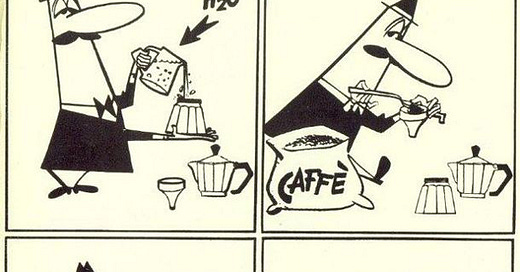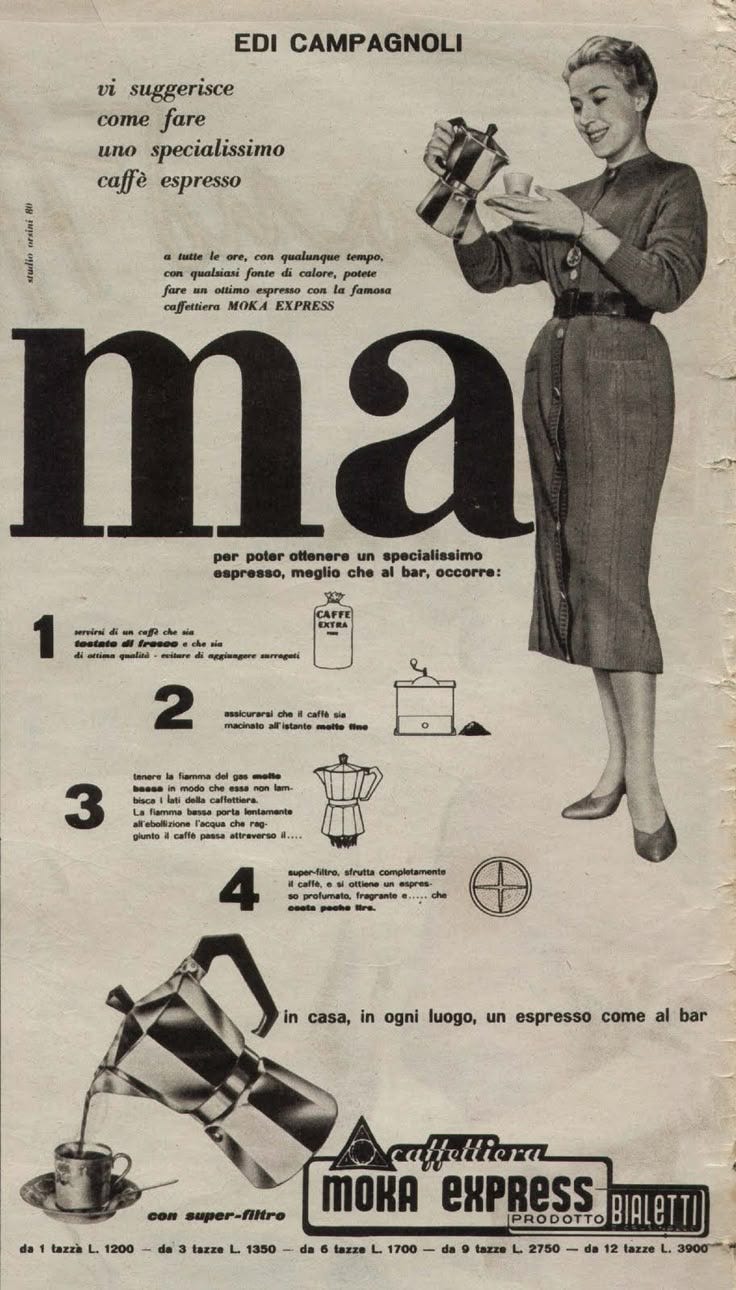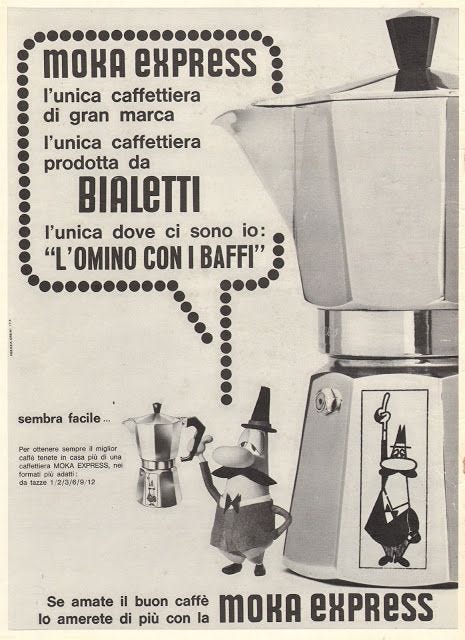Hello and welcome to another edition of That is Neat, Patrick. What follows is a collection of things Paddy found Neat this week.
Moka Pot
Like most people, I am a big coffee guy. My drug of choice is caffeine. I am incapable of functioning without enough caffeine in me to kill a small horse. I need a shot of espresso to get out the door in the morning, a larger coffee based beverage for the drive to work (my commute is over an hour on a good day, so it needs to be a *large* beverage), and then another coffee or two when I get into the office. It is at this point that I enter the coffee zone. I am only minimally more awake and alert than I was when I woke up, but make no mistake, the resulting anxiety from all this coffee keeps me going.
Few things in this world give you as much joy as a well made espresso. Few things aggravate me as much as the price of a well made espresso at my local (or any) trendy cafe. Then I get confused because all the people in the cafe are card carrying members of the communist party of Canada. There's posters on the wall advertising socialism and other nonsense. However, they are asking me to pay $10 for a latte plus tip. Comrade, that's our coffee.
As such, I dream of getting myself a nice espresso machine for the home. Not even an expensive one, just a Bambino that I can learn to use well and make some good coffee. The issue is it is hard to justify (to my wife) the cost of an espresso machine. In an espresso machine’s stead, i have a multitude of cheaper coffee makers that all likely add up to the cost of an espresso machine. My current favourite is the moka pot.
The moka pot, a classic stovetop coffee maker, is one of the most recognizable symbols of Italian coffee culture. Known for producing a rich, espresso-like brew without the need for expensive machines, it has become a staple in homes around the world. Its story is deeply intertwined with the history of 20th-century design, industry, and domestic life, making it far more than a simple kitchen appliance.
The moka pot was invented in 1933 by Luigi De Ponti, an engineer who designed it for Alfonso Bialetti, an Italian metalworker and entrepreneur. Bialetti recognized the commercial potential of the design and began manufacturing it through his company, Bialetti Industrie. The pot was named after Mokha (Mocha), a port city in Yemen that played a significant role in the early coffee trade.
The moka pot is a simple design consisting of three main chambers: the lower chamber for water, a filter basket for ground coffee in the middle, and an upper chamber for the brewed coffee. As the water in the lower section is heated, steam pressure pushes the hot water upward through the coffee grounds and into the top chamber. This method, relying on pressure to push the water through the grounds, rather than gravity to pull the water through, allowed for a stronger brew than typical drip coffee.
The original model, known as the Moka Express, featured a distinctive octagonal aluminum body, a material that was both lightweight and readily available in Italy at the time. Its geometric design not only served a practical purpose but also contributed to its aesthetic appeal. Over the decades, the moka pot’s form has changed very little, a testament to the elegance and efficiency of its original blueprint.
In the years following World War II, the moka pot became a symbol of postwar domestic modernity in Italy. As coffee culture grew, Italians embraced the moka pot as a convenient and affordable way to enjoy coffee at home, similar to the espresso purchased in the cafe. Bialetti's smart marketing, including the creation of the famous mascot, the "little man with a mustache" (L’omino coi baffi), turned the pot into an icon.
By the 1950s and 60s, the moka pot was an essential part of everyday life in many households. Its enduring success was due not only to its functional value but also to its cultural resonance. It represented a democratization of espresso, previously available mainly in cafés. Over time, the moka pot gained recognition not just as a coffee maker but also as a design icon. Museums and design institutions have featured it as an example of functional, accessible, and aesthetically enduring industrial design.
More than 300 million moka pots have been sold worldwide. In an age of high-tech coffee gadgets, it remains beloved for its simplicity, durability, and nostalgic charm. If you are like me, a decent amount of coffee related content comes up when cruising the algorithm. There are so many new and outrageously expensive coffee related tools out there. Fellas are making 18 step reels on how to make the perfect cup of coffee. The first step always involves buying $2500.00 worth of paraphernalia. Subsequent steps involve measuring temperatures and pressures the three decimal places. Where does it end? What are we doing here? Grind a good coffee bean, put it in the moka pot. Make sure you tighten the lid enough nothing escapes when it is at pressure. Put it on the stove and take it off when it's done. Enjoy the coffee. Touch the grass. Repeat until you're in the coffee zone.
Neat Video
Something to think about.
Physical Media
Standart
Standart is a German quarterly coffee magazine which delves into the wider world of coffee, from the historical to the sociological, scientific, and cultural, as per their website. Each issue comes with a sample of beans from a coffee roasters around the world. I’ve only had a chance to flip through this issue, but so far it is pretty neat.
L’Etiquette
About a month after everyone else received the latest copy of L’Etiquette, I received mine in the mail. My takeaways from this issue on how to dress for spring and summer is that I made the right choice investing in big pants and it is finally time to bring my cardigans out of storage. It is also fun playing is this a nice outfit or can 125lb (victim weight) rakish frenchmen pull anything off. The European mind cannot comprehend the North American frame.
TNP Book Club
Ulysses is a fantastic but very long book and I still have a very short attention span. Therefore, I took a break and recently finished Ernst Junger’s Storm of Steel.








